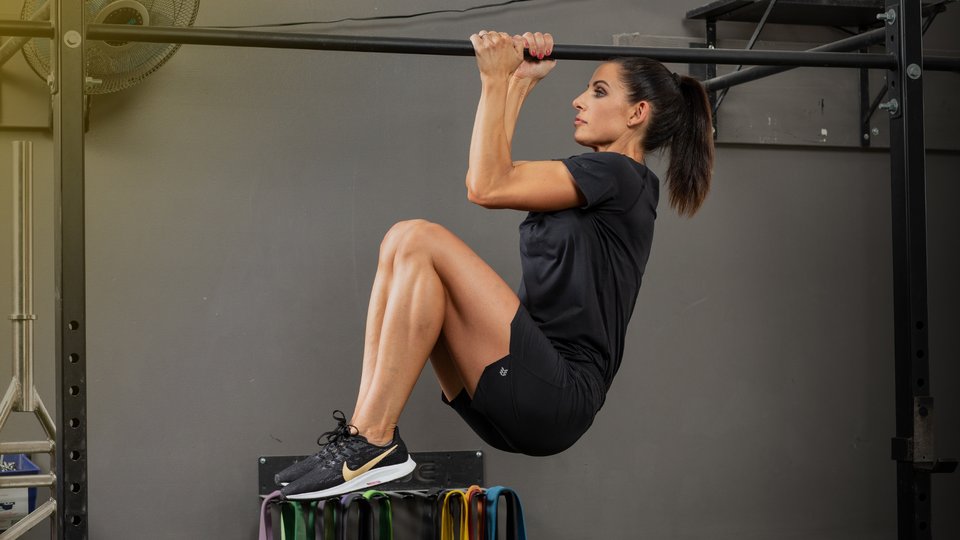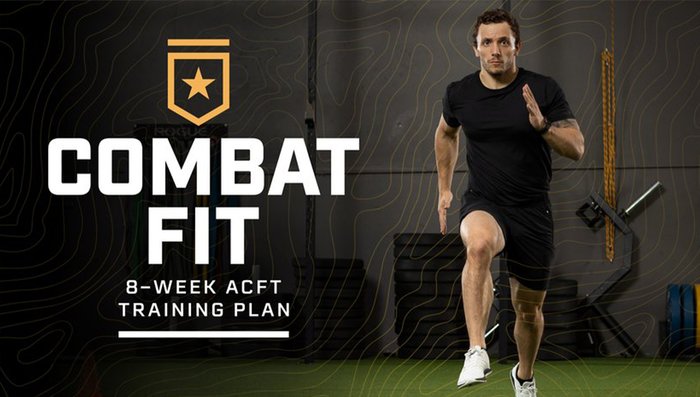Products You May Like
All of the events in the new Army Combat Fitness Test, or ACFT, are difficult in their own way. Especially if you’ve been accustomed—as many soldiers have—to being tested only on sit-ups, push-ups, and running, having to perform heavy trap bar deadlifts, sled drags, and hand-release push-ups can be a serious eye-opener. But the event that has caused the most problems for aspiring testers so far is without a doubt event number 5 of 6: the hanging leg tuck.
According to Army standards, just one rep of the leg tuck is all you need to meet the minimum requirements for “moderate” Army jobs like drone operator and intelligence analyst. Five leg tucks are required for “heavy” jobs like infantryman and armor crewman. But huge numbers of initial ACFT testers—over half, by some measurements—have found even one rep to be out of the question.
This event has been such a challenge, in fact, that it was the subject of the only major revision the Army has made to the ACFT since it was newly released—what is called “ACFT 2.0.” According to ACFT 2.0, soldiers who cannot perform a minimum of one leg tuck have the option to perform an elbow plank for a minimum of 2 minutes.
However, military sources have stated that the plank isn’t planned to be a permanent option. So yes, it’s still worth your time to train for the tuck. In fact, I would say, you can and should aim to meet the standard of doing five leg tucks, not just one.
It may sound like a reach, but you can do this. Here’s how I recommend training to crush the leg tuck. You can see these principles in action in my BodyFit program Combat Fit: 8-Week ACFT Training Plan.
The Best Exercises to Improve the ACFT Leg Tuck
To look at, the leg tuck is nothing all that complicated. It involves hanging from a bar with an alternating (mixed) grip and bringing your knees to your elbows. But this motion seriously tests the strength of your grip, arms, back, and abs, in a different way than almost anything else you do in the gym. You can be able to do pull-ups for a few solid reps and not be able to do a single leg tuck. You can be someone with strong abs and not be able to do a single leg tuck.
So how can we crack this movement? It can be tempting when trying to master something you want to get better at—or in this case, absolutely need to get better at—to simply keep trying it over and over again for weeks or months, hoping something will change by test day. But in the case of something as complex as the leg tuck, banging your head against the wall in this way is far more likely to leave you disappointed than triumphant.
If you can’t perform leg tucks right now, the best way to improve at it is to break up the movement into its component parts, and work on improving each of those. That will build the strength you need to access the move.
The three components (in no particular order) needed to successfully perform the leg tuck are:
- Grip strength to hang from the bar.
- Abdominal and hip flexor strength to touch your legs to your elbows.
- Upper-body pulling strength to lift your body toward the bar.
Put simply, training to improve your leg tuck performance means training to improve your strength in these three above areas. Let’s tackle them one at a time.
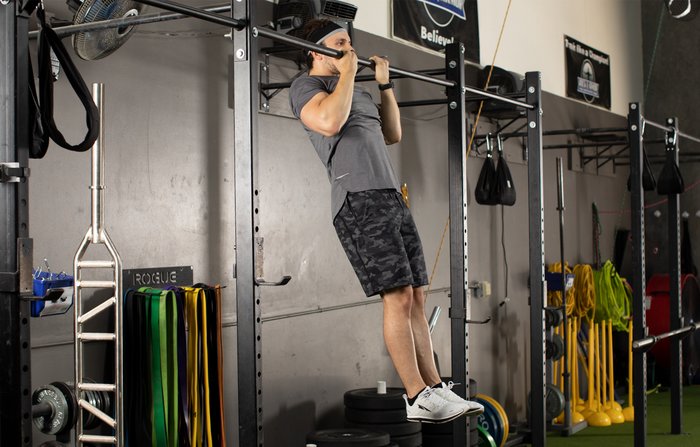
Grip Strength: Bar Hangs
Pop quiz: How long is the leg tuck event? The rules say 2 minutes, but let’s be honest: Nobody’s going to be hanging from the bar for that long, even if they max out the test with 20 reps. So let’s focus on the strength you need to pass, not what you would have in a perfect world.
Being able to hang from the diameter bar for at least 30 seconds is the minimum baseline I recommend having on test day. This is because struggling to do 5 leg tuck reps in good control with take you roughly 15-20 seconds. So, if your grip strength endurance to hang from the bar far exceeds that time frame, you can be confident your grip won’t be the limiting factor in your leg tuck performance.
If grip strength is your limitation, here are two ways to program it:
- At the end of any (or maybe even every) workout, hang from a bar for 2-3 sets to failure. This ensures your grip fatigue doesn’t interfere with holding the weights in other exercises. As an added benefit, this is a great total-body stretch that also decompresses the spine after any other lifting you’ve done.
- In a practice ACFT test workout, where the programming says, “leg tuck,” perform a set of reverse crunches (as described below), immediately followed by a hang of at least 30 seconds, or to failure.
Ab Strength: Reverse Crunches and Knee Raises
Simple ab moves like reverse crunches aren’t as popular in strength training as they were a few years back, but this old-school exercise can be your secret weapon in the quest for the leg tuck. After all, the leg tuck is more or less a hanging reverse crunch.
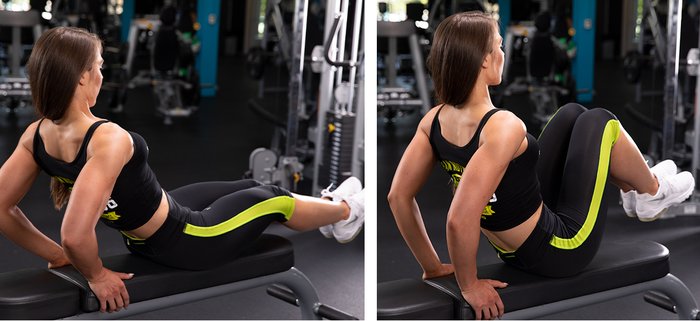
That said, it’s crucial you do your reverse crunches the right way—and most people don’t. Here’s the best way to do reverse crunches for maximal leg tuck carry-over:
- Lie on your back on a bench or the floor with your knees bent and your hips flexed into your belly.
- With your elbows bent, hold onto the bench just behind and above your head. If you’re performing these on the floor, hold onto something stable at floor level.
- Smoothly and with control, do a reverse crunch by rolling your lower back up off the bench and bringing your knees toward your chin. Do not use momentum or jerk your body.
- Slowly reverse this motion, lowering your spine back down toward the bench, one vertebra at a time. Do not allow your legs to extend or your head to lift off the ground at any point.
Done strictly, these are hard. But the strictness is essential! Eliminating momentum forces the abdominal musculature to perform the action, which is how you’ll build the ability to power through those last few inches separating your knees from your elbows when hanging from the bar.
Do reverse crunches where it calls for leg tucks in your workouts, pairing them with bar hangs, until you’re able to perform at least 10 reps of reverse crunches in perfect form. Once you can do that, you can progress to these other variations:
- Incline bench reverse crunch
- Hanging knee raise
If hanging knee raises sound too easy, then I can pretty much guarantee you’re doing them the wrong way: with your legs hanging down and flexing at the hips. If you can perform 5 strict reps where you tuck your pelvis, roll your torso upward, and bring your knees close to your face—followed by lowering to a dead hang under control—then you’ve definitely got the ab strength to perform leg tucks.
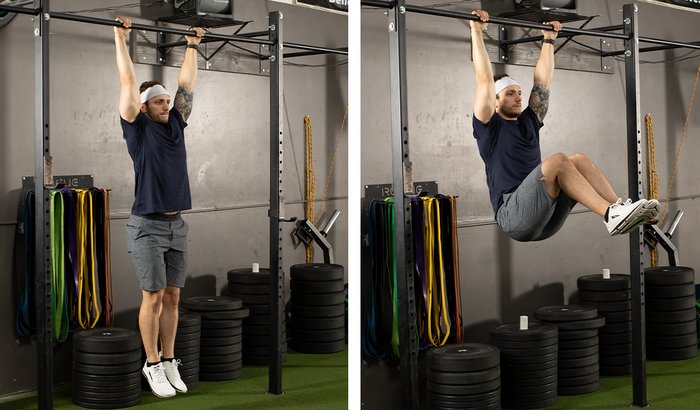
Upper-Body Pulling Strength: Pull-ups and Pull-downs
What goes into a leg tuck aside from grip and abs? Back and biceps—also known as those muscles that get worked in pull-ups and chin-ups.
The only problem with those moves is that a lot of the people who can’t do leg tucks also can’t do them. So me telling you, “Go do a few sets of 8-10 chin-ups to get better at leg tucks” isn’t going to be much help.
Luckily, research has shown there is a significant correlation between pull-up performance and the lat pull-down using your bodyweight load.[1-3] This means that if you’re able to use your bodyweight load for at least 1 rep of the lat pull-down, it will transfer to your pull-up performance. And, if you’re able to perform multiple lat pull-down reps at your bodyweight load, or your lat pull-down 1RM is beyond your bodyweight load, it correlates to further improved pull-up ability—and, I would argue, leg tuck ability.
No, to be clear, this doesn’t mean you need to start doing nothing but heavy singles on the lat pull-down. But it does mean that you can benefit from working toward a solid set of bodyweight pull-downs, even if you’re unable to do chin-ups right now. And if you see chin-ups in the Combat Fit program or another program, you can effectively substitute heavy lat pull-downs for them.
Here’s how to perform the lat pull-down for maximum carry-over to the leg tuck:
- Use a neutral-grip (palms facing each other) handle, because it closely matches the bar hang grip utilized in the ACFT leg tuck.
- Use the heaviest weight possible that you’re able to perform each rep without cheating.
- Perform the concentric (pulling) portion as fast as you can (even though the weight won’t move fast because it is so heavy).
- Perform a 3-second eccentric (lowering) portion for each rep.
I would also recommend balancing some of that two-armed pulling with single-arm pull-downs—which is the approach in the Combat Fit program. However, if you’re chasing a bodyweight lat pull-down, I would perform them in a very specific way: as a single-arm eccentric-overload lat pull-down.
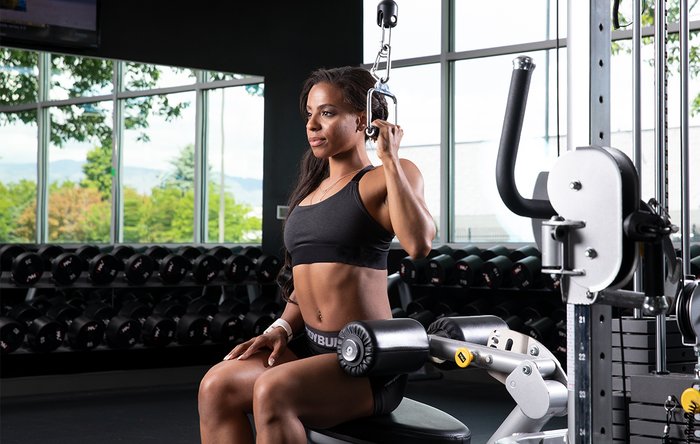
Why focus on the eccentric? Because our muscles are stronger eccentrically than concentrically, and as many people have discovered while training for their first pull-up, slow eccentrics are as close to a magic bullet as there is for that move.
The science backs this up. Researchers in one study found that subjects’ 1RM could be acutely increased by applying a supramaximal load (105 percent of 1RM) only on the eccentric phase of the lift.[4] They found this increase in eccentric loading improved 1RM concentric performance by 5-15 pounds.
Here’s how to perform a single-arm pull-down for maximum pulling strength:
Use both hands to pull the weight down on the concentric portion.
- Use only one hand on the eccentric portion of each rep.
- Perform a 7-8-second eccentric on each rep. Use the heaviest weight possible that allows you to get at least 7 seconds on the eccentric portion of each rep. No heavier! Don’t risk injury by choosing a weight you can’t control.
- Perform 4-5 sets of 2-3 reps per side, performing all your reps on one side before switching to the other without resting. Then, rest generously between sets, like 3-4 minutes.
If you can perform chin-ups for reps, though, great! Keep doing them. But also consider doing some pull-down work on another day of the week to really strengthen those pulling muscles, as is programmed in Combat Fit.
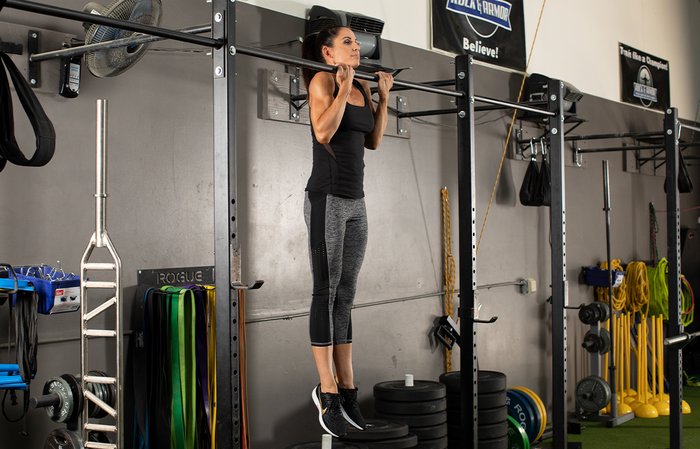
The Other Way to Make the Leg Tuck Easier
All of those training techniques aside, there is one other aspect of the leg tuck that has to be mentioned. It has to do with your body weight and body composition.
Unlike the deadlift, where having a bigger body can be an advantage, with the leg tuck, every “extra” pound on your body is one you have to pull off the ground. And though you might not want to hear it, for many people the best way to improve leg tuck performance is to lose some extra fat.
Here’s why: Leg tuck performance is determined by your relative strength, which is how strong you are in relation to your body weight. It stands to reason that the more body weight you’re carrying, the less work you’ll be able to complete. Think of it like putting on a weighted backpack—you’ll do a lot fewer reps with the weighted pack on than without it.
If this is your reality, then let’s deal with it head-on. Here’s how to lose fat while training for the ACFT:
- Follow a diet that’s conducive to fat loss. This is why the Combat Fit training plan also includes a detailed nutrition plan.
- Follow a complete, top-to-bottom ACFT training plan, rather than simply trying to “crack” the most problematic event.
A comprehensive, progressive training plan like Combat Fit will do plenty to help you strip off any body weight that’s holding you back. You’ll sprint, drag, lift, and do plenty of other hard work that will burn calories while also getting you stronger at the events.
And then, on test day, it will all come together.
References
- Sánchez Moreno, M., Pareja Blanco, F., González Badillo, J. J., & Díaz Cueli, D. (2015). Determinant factors of pull up performance in trained athletes.
- Johnson, D., Lynch, J., Nash, K., Cygan, J., & Mayhew, J. L. (2009). Relationship of lat-pull repetitions and pull-ups to maximal lat-pull and pull-up strength in men and women. The Journal of Strength & Conditioning Research, 23(3), 1022-1028.
- Halet, K. A., Mayhew, J. L., Murphy, C., & Fanthorpe, J. (2009). Relationship of 1 repetition maximum lat-pull to pull-up and lat-pull repetitions in elite collegiate women swimmers. The Journal of Strength & Conditioning Research, 23(5), 1496-1502.
- Doan, B. K., Newton, R. U., Marsit, J. L., Triplett-Mcbride, N. T., Koziris, L. P., Fry, A. C., & Kraemer, W. J. (2002). Effects of increased eccentric loading on bench press 1RM. The Journal of Strength & Conditioning Research, 16(1), 9-13.
